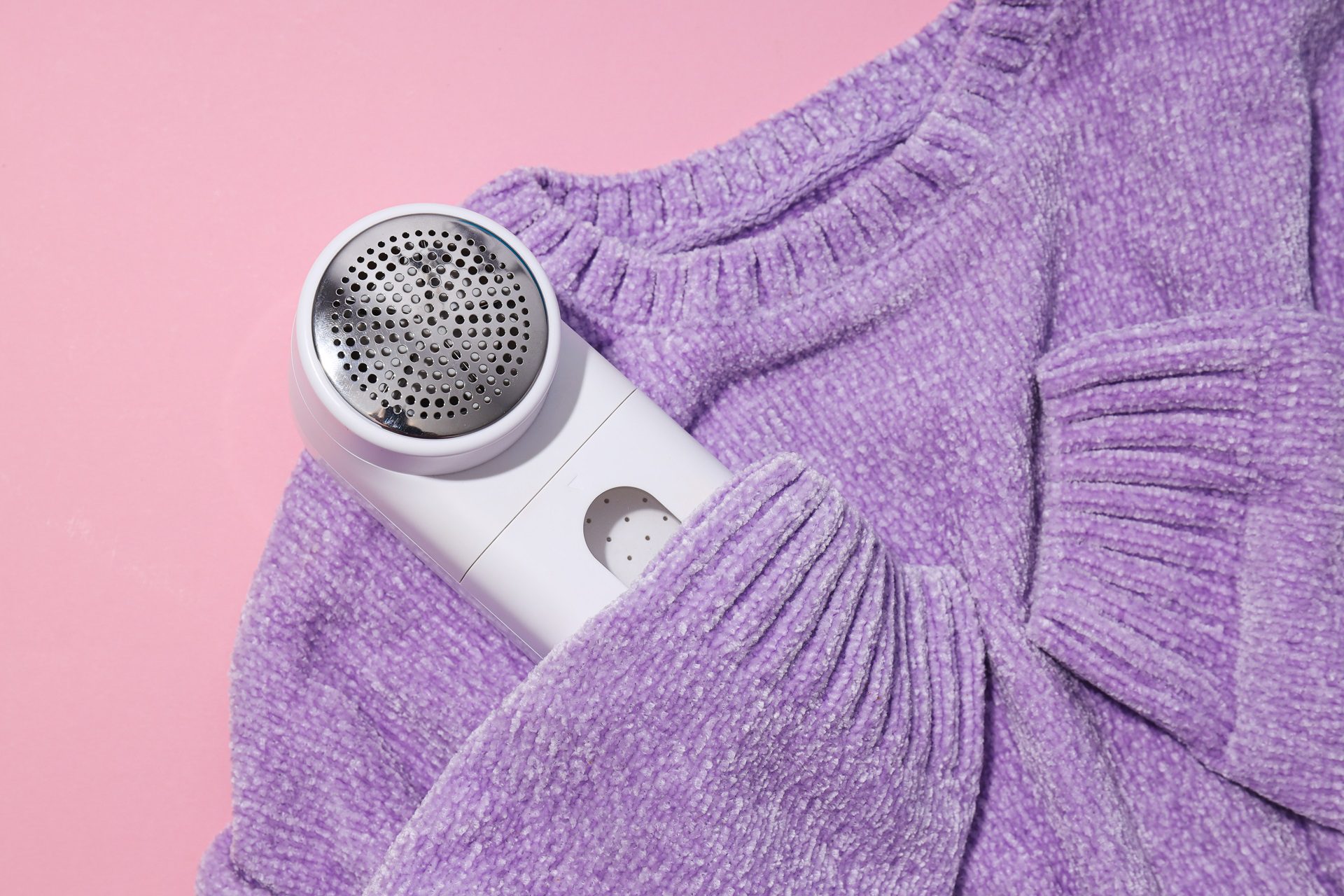Lint doesn’t appear out of nowhere—it’s the result of fibers loosening during the wash. But why does it happen more in certain loads? Here are the most common culprits and how they come into play.
Clothes such as towels, fleece, and certain sweaters shed fibers easily during washing. If you mix these with lint attracting fabrics like leggings or shirts made of synthetic materials, you have a recipe for a lint explosion.
When your washing machine is packed to the brim, clothes don’t have enough room to move freely. This friction causes fibers to loosen and transfer, leading to more lint buildup.
Throwing everything in one load might save time, but it’s a major lint trigger. Combining heavy lint shedding items with lint magnet fabrics like dark cotton or polyester is a common mistake that leaves your clothes covered in fuzz.
A high-speed spin or rough agitation can cause excessive wear on fabrics, pulling fibers loose and creating lint. Gentle fabrics are especially prone to this when washed on the wrong cycle.
Your washer might be part of the problem. Lint left behind in the drum or filter can transfer to your clothes during the next cycle, especially if it’s not cleaned out regularly.
Clothes naturally shed fibers as they age, and items that are worn out or have loose threads are more likely to create lint. This is particularly common with overwashed items such as socks, blankets, or T-shirts.

A lint roller is one of the simplest and fastest tools to remove lint. They are inexpensive and small enough to stash in your laundry room, car, or office drawer for quick touch-ups. Look for a reusable lint roller if you want an eco-friendly option that won’t create extra waste.
How to use it: Just roll it over the fabric, and it picks up fuzz in seconds.
Fabric shavers are battery-powered tools that shave off lint without damaging the fabric, ideal for heavier materials like sweaters or blankets. But while fabric shavers work great on thicker items, avoid using them on delicate fabrics, as they could cause damage.
How to use it: Glide the shaver gently across the surface of the fabric; it quickly removes lint and gives your clothing a smooth, refreshed look.
This method works especially well on dark clothes where lint is more noticeable.
How to use it: Lightly dampen a cloth or sponge and gently rub it over the lint-covered areas of your clothing. Again, make sure the cloth is only slightly damp to prevent leaving watermarks or damp spots on your clothes. The moisture helps lift off the lint without sticking to the fabric.
Tossing your clothes in the dryer on low heat with a slightly damp cloth can help catch any remaining lint that didn’t come off during washing.
How to use it: Slightly dampen a cloth and toss it into the dryer along with your clothes. Add a dryer sheet to the load for an extra boost; it can reduce static, which often causes lint to cling. Just a few minutes in the dryer should do the trick—overdrying can make clothes more prone to static and lint buildup.
If you don’t have a lint roller, regular sticky tape can work wonders in a pinch. Perfect for quick fixes on small areas or last-minute lint emergencies. Be careful with delicate fabrics like silk or satin, as tape could damage them or leave a sticky residue.
How to use it: Wrap it around your fingers, sticky side out, and pat it over the linty areas.
Vinegar is gentle on fabric, so it won’t harm your clothes while removing excess fuzz. As a bonus, vinegar acts as a natural fabric softener, leaving your clothes feeling fresh and soft.
How to use it: Add half a cup of white vinegar to the fabric softener dispenser of your washing machine. If your washer doesn’t have a dispenser, you can add it during the rinse cycle.
A rubber glove can lift lint off fabrics by creating slight friction. It’s an easy solution if you don’t have a lint roller or other tools handy, and it’s reusable, too. This method is also fantastic for removing pet hair, which can be even harder to get off than regular lint.
How to use it: Just rub the glove over the linty area, and the fuzz sticks right to it.
A clothes brush, especially one with stiff bristles, is perfect for removing lint from heavier fabrics like wool coats or sweaters. Unlike adhesive solutions, a clothes brush won’t leave behind any residue, so it’s safe for most materials.
How to use it: Place your item on a clean, flat surface like a table or bed. Always brush in the direction of the weave or grain of the fabric to avoid damaging the fibers. Use short, even strokes, starting at the top and working your way down.
Sometimes, no matter how much effort you put into cleaning, lint still clings to your clothing items. When that happens, it might be time to let the professionals step in—not just to refresh your clothes but also to ensure a deeper, more effective clean. At Major Cleaners, we offer professional dry cleaning services designed to not only handle lint but also to give your garments and household items exceptional care!
From everyday laundry and dry cleaning to specialized care like wedding dress cleaning and preservation, we have you covered. We prioritize not only flawless results but also exceptional customer service—all at competitive pricing that fits your budget. Say goodbye to lint and stains with Major Cleaners—your trusted partner for professional clothing care in Greenville, South Carolina.
Schedule your service today and let us redefine what professional clothing care means for you! Call our customer service hotline at 864-675-9499.
